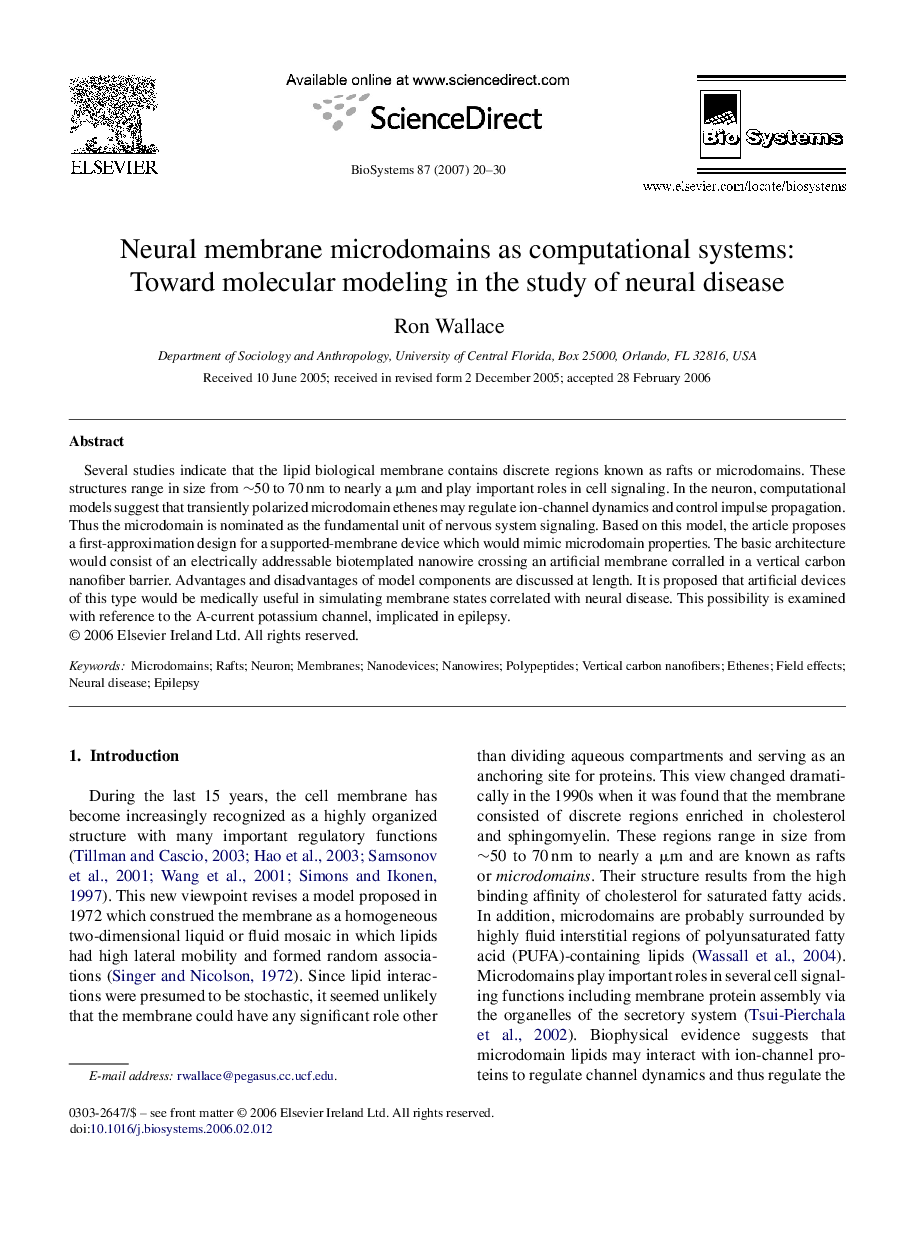| Article ID | Journal | Published Year | Pages | File Type |
|---|---|---|---|---|
| 2076801 | Biosystems | 2007 | 11 Pages |
Several studies indicate that the lipid biological membrane contains discrete regions known as rafts or microdomains. These structures range in size from ∼50 to 70 nm to nearly a μm and play important roles in cell signaling. In the neuron, computational models suggest that transiently polarized microdomain ethenes may regulate ion-channel dynamics and control impulse propagation. Thus the microdomain is nominated as the fundamental unit of nervous system signaling. Based on this model, the article proposes a first-approximation design for a supported-membrane device which would mimic microdomain properties. The basic architecture would consist of an electrically addressable biotemplated nanowire crossing an artificial membrane corralled in a vertical carbon nanofiber barrier. Advantages and disadvantages of model components are discussed at length. It is proposed that artificial devices of this type would be medically useful in simulating membrane states correlated with neural disease. This possibility is examined with reference to the A-current potassium channel, implicated in epilepsy.
